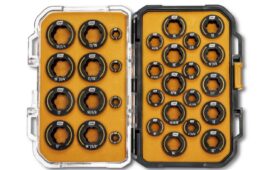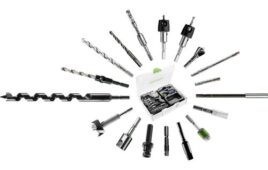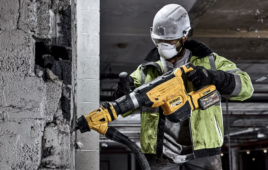Written by Mark Edmunds
Product Manager | Snap-on Industrial

Did you know that some companies have begun restricting technicians from pulling more than 600-foot pounds of manual torque due to ergonomic issues? It’s important to practice safe tooling practices.
There is a perception that applying torque to a fastener is intuitive and that anyone can do it. Well, anyone can, but the ability to do it properly is what makes the difference — and that’s where selecting the right torque wrench is critical.
Torque wrenches come in all shapes and sizes and are designed for specific applications. There are six key factors to consider when choosing your torque tools include:
1. Torque requirement
2. Data, traceability & error-proofing
3. Speed versus accuracy
4. Available power sources
5. Budget
6. Certification
Additionally, torque certification is available to provide extra training in proper torque use. Evaluating your torque needs against these factors will help point you to the best tool every time.
1. Torque requirements
The first step in selecting the proper torque wrench is to identify the torque range for your specific application. If most of your work involves applying up to 600 pounds of torque, a traditional manual wrench might be the ideal choice.
However, if the application involves more heavy-duty bolting, with torque requirements reaching upwards of 2,000 pounds of torque, torque tools that rely on different technologies will likely be required.
It’s important to note that while several hand torque wrench suppliers offer tools that can go up to about 2,000 foot-pounds, some companies have begun restricting their technicians from pulling more than 600-foot pounds due to ergonomic issues.
Tools such as manual torque multipliers offer a safer way for technicians to pull higher torque amounts by hand. Torque multipliers are often used when larger powered torque-controlled tools are unavailable, or in tight spaces where a longer-handle torque wrench isn’t practical.
2. Data, traceability & error-proofing
Capturing data from work performed is becoming more critical as companies realize that this data can make work more efficient and reduce human errors. This is especially true in manufacturing and assembly applications, where companies want to ensure that the work was done as the work order describes. Having the ability to capture, record, and document that data is vital.
Electronic torque tools can offer this level of functionality by providing instant data on the exact torque applied – something most mechanical wrenches cannot do.
To ensure the work is performed correctly, a manufacturing engineer can pre-set parameters or pre-program torque sequences to be followed in a precise order. These types of innovations significantly reduce errors, which has obvious benefits to the bottom line.
Even in MRO and industrial torque applications, companies require electronic documentation to aid in improving efficiency, reduce errors, and prove that work was done correctly. For these reasons, data collection, traceability, and error-proofing capabilities are essential considerations when choosing your next torque tool.
3. Speed versus accuracy
When applying controlled amounts of torque, there’s always a tradeoff between speed and accuracy. The slower you pull on a hand torque wrench, the more accurate you can be. The same holds true for torque-controlled power tools; the faster you apply torque, the less precise the tool will be.
For less critical torque applications in manufacturing and assembly, where there may already be a large safety factor built into the overall project, a torque accuracy of +/- 15% may be acceptable. For these cases, work can be sped up using the clutch or low-torque power impulse tools.

The Snap-on ControlTech Micro Torque Wrench is an electronic torque wrench in a compact form factor for use in limited-access applications. Learn more in this video.
Electronic torque wrenches and transducerized power tools generally offer the highest degree of repeatability and accuracy for critical torque applications. Visual alerts indicate when you are nearing the desired torque setting, which helps prevent torque overshoot. While these tools are not as fast as some torque technologies, they offer a safe balance of speed and accuracy.
4. Available power sources
The available power source is also a critical consideration, particularly for industries with remote locations. For example, a wind farm in a rural area may not have the proper power supply for many types of torque-controlled power tools.
One important question to ask: is your available power supply electric, pneumatic, or only human muscle? Suppose you have a pneumatic torque multiplier, but you can’t supply the proper amount of airflow and pressure. If so, the tool will do you no good. It’s also not very practical to haul a heavy hydraulic pump up a wind tower for hydraulic wrenches.
If you’re in a very remote location and all you have is a torque wrench for a higher torque application, remember the torque multiplier is a good option. Battery-powered torque multipliers are also an excellent choice for remote applications.
Recognize where the work will be taking you and identify the power source so you won’t run into any
operational issues when you arrive onsite.
5. Budget
Different types of torque tools vary widely in function and application, as does their cost. Electronic models that offer data collection and wireless functionality (for the purposes of workflow management) tend to be much more expensive than lower-tech mechanical versions.
Choosing the ideal torque tool means evaluating your budget and comparing it to your most critical needs to successfully accomplish the work. Fortunately, there are now more torque technologies available than ever before, and it’s possible to pick and choose from the many options to get what you need.

Torque certification is taught at technical schools and community colleges across the country. You can learn more here.
6. Certification
Understanding the principles of torque is much more involved than simply cranking down on a nut until you hear a click. Training classes, such as torque certifications, have become an invaluable resource for technicians to understand all facets of the use of torque wrenches, which make them more effective, proficient, and safer on the job.
Snap-on has developed a torque certification course that dives into three areas: theory, application of torque, and corresponding safety steps, and proper hydraulic torque.
Theory goes into the basics of what different fasteners do, how to identify bolt grades, metal grades, and the science and math that’s at work in fastener protocol. The second section is the application of torque, which shows technicians how to use torque tools, how to make proper calibration equations, and how to make wrench adjustments.
The third module is dedicated to hydraulic torque application. The application of hydraulic torque requires its own skill sets including knowledge of hydraulic systems, proper fastener fitting for these specialized applications, and large-fastener/equipment safety considerations.
There are several options available, so it’s best to think strategically about how you select your torque tool. It’s a major investment, but considering these factors as part of your due diligence will lead you to make the right choice.





Tell Us What You Think!